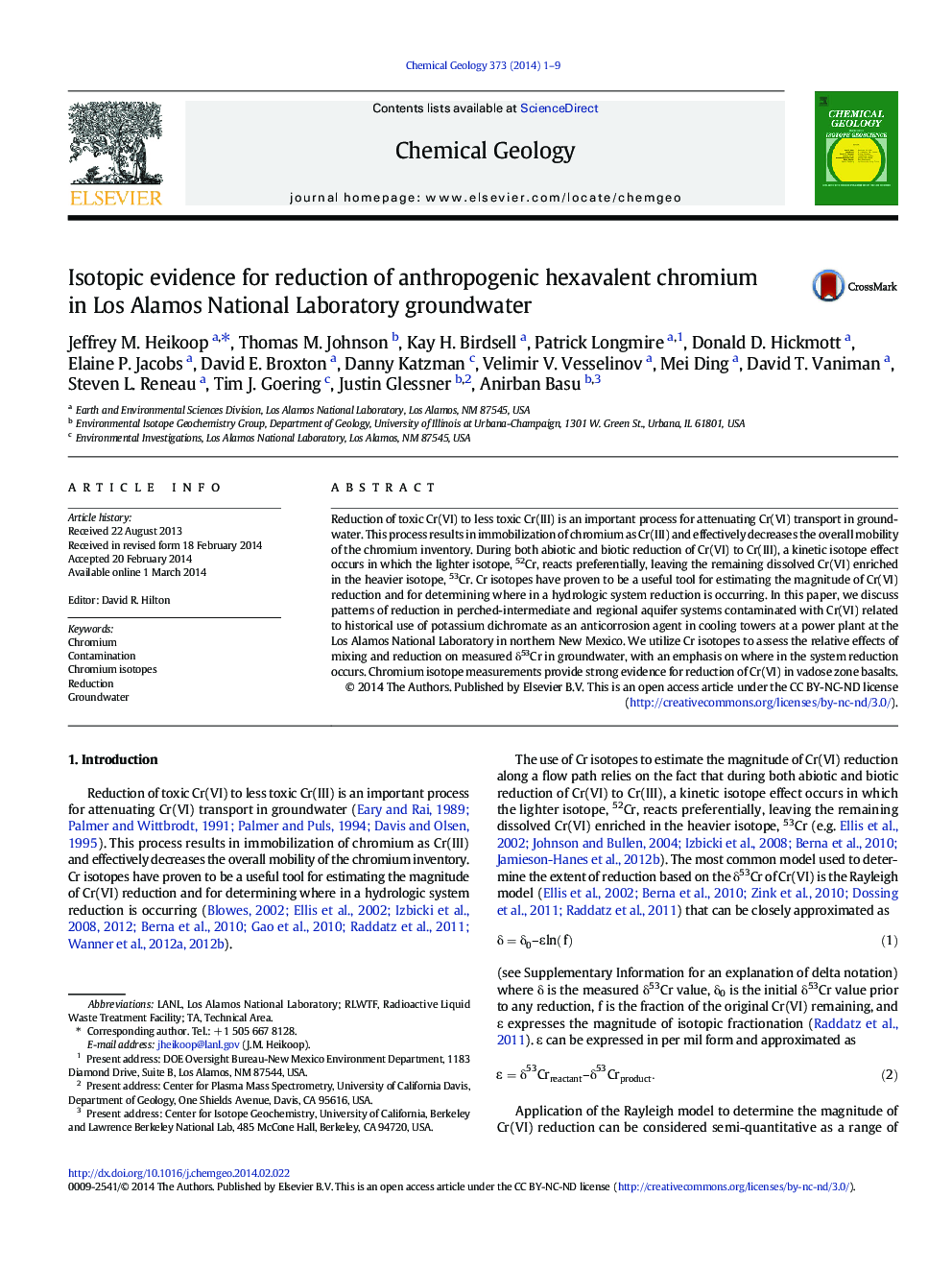| Article ID | Journal | Published Year | Pages | File Type |
|---|---|---|---|---|
| 6436657 | Chemical Geology | 2014 | 9 Pages |
â¢Study using Cr isotopes in groundwater to characterize contaminant attenuationâ¢Cr isotopes indicate chromate reduction between surface and regional groundwater.â¢Chromate reduction is most strongly associated with basalts.
Reduction of toxic Cr(VI) to less toxic Cr(III) is an important process for attenuating Cr(VI) transport in groundwater. This process results in immobilization of chromium as Cr(III) and effectively decreases the overall mobility of the chromium inventory. During both abiotic and biotic reduction of Cr(VI) to Cr(III), a kinetic isotope effect occurs in which the lighter isotope, 52Cr, reacts preferentially, leaving the remaining dissolved Cr(VI) enriched in the heavier isotope, 53Cr. Cr isotopes have proven to be a useful tool for estimating the magnitude of Cr(VI) reduction and for determining where in a hydrologic system reduction is occurring. In this paper, we discuss patterns of reduction in perched-intermediate and regional aquifer systems contaminated with Cr(VI) related to historical use of potassium dichromate as an anticorrosion agent in cooling towers at a power plant at the Los Alamos National Laboratory in northern New Mexico. We utilize Cr isotopes to assess the relative effects of mixing and reduction on measured δ53Cr in groundwater, with an emphasis on where in the system reduction occurs. Chromium isotope measurements provide strong evidence for reduction of Cr(VI) in vadose zone basalts.
